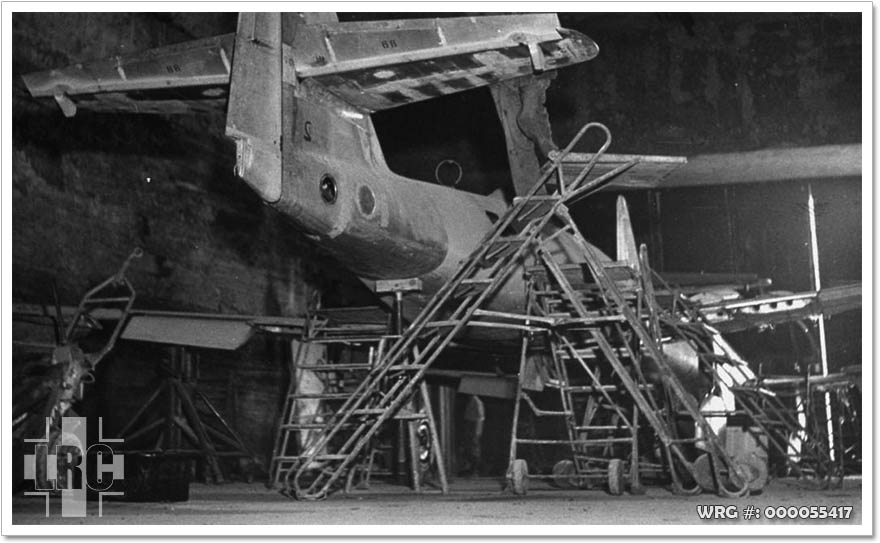Messerschmitt Me 262
Production
About 1,400 planes were produced, but a maximum of 200 were operational at any one time. According to sources they
destroyed from 300 to 450 enemy planes, with the Allies destroying about one hundred Me 262s in the air. While
Germany was bombed intensively, production of the Me 262 was dispersed into low-profile production facilities, sometimes
little more than clearings in the forests of Germany and occupied countries. Through the end of February to the end of
March 1945, approximately sixty Me 262s were destroyed in attacks on Obertraubling and thirty at Leipheim; the
Neuburg jet plant itself was bombed on 19 March 1945.

Underground Me 262 production line
[Source: Bundesarchiv]
Large, heavily protected underground factories were constructed - as with the partly-buried Weingut I complex for Jumo
004 jet engine production - to take up production of the Me 262, safe from bomb attacks, but the war ended before they
could be completed. Wings were produced in Germany's oldest motorway tunnel at Engelberg, to the west of Stuttgart. At
B8 Bergkristall-Esche II at St. Georgen/Gusen, Austria, slave labourers of concentration camp Gusen II produced fully
equipped fuselages for the Me 262 at a monthly rate of 450 units on large assembly lines from early 1945. Gusen
II was known as one of the harshest concentration camps; the typical life expectancy was six months. An estimated
35,000 to 50,000 people died on the forced labour details for the Me 262.

Underground Me 262 production line
[Source: Bundesarchiv]
Sources:
Gunston, Bill & Wood, Tony - Hitler's Luftwaffe , 1977, Salamander
Books Ltd., London
, 1977, Salamander
Books Ltd., London
Wikipedia - ME 262
Gunston, Bill & Wood, Tony - Hitler's Luftwaffe
Wikipedia - ME 262






